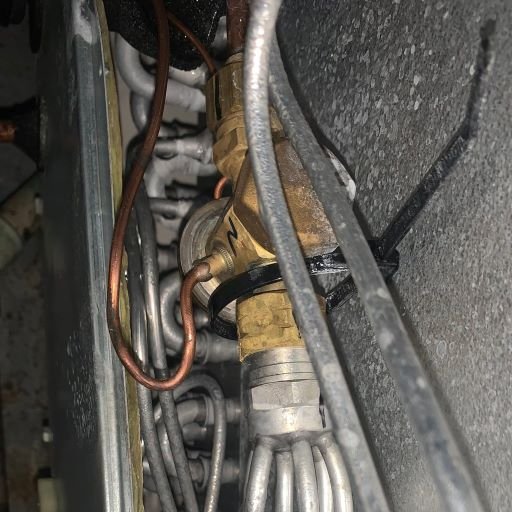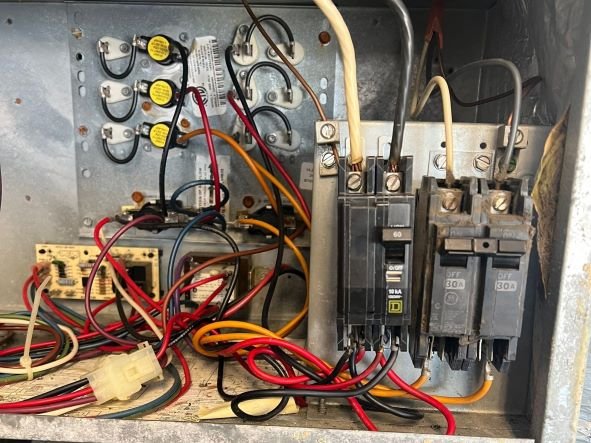Heat Pump Heating Maintenance
Introduction to Heat Pump Heating Systems
Welcome to our comprehensive guide on heat pump heating maintenance. Whether you're a new homeowner or have been managing your home's heating and cooling needs for years, understanding the intricacies of a heat pump system is crucial for maintaining a comfortable and energy-efficient environment. A heat pump is a versatile unit that provides both heating and cooling to your home by transferring heat between the indoors and outdoors. Regular heat pump maintenance is not just a recommendation; it's a necessity to ensure your system runs efficiently and lasts for years to come.
Understanding Your Heat Pump
Heat pumps are an integral part of many HVAC systems, utilizing the outdoor unit and indoor coil to regulate your home's temperature. Whether you have an air-source, ground-source, or another type of heat pump, each has common components that require regular heat pump maintenance. Knowing how your heat pump works can help you identify when it's operating correctly or when it might need a professional inspection.
The Reversing Valve and TXV
The reversing valve and the Thermostatic Expansion Valve (TXV) are two critical components in the operation and efficiency of a heat pump system. Understanding their function, design, and operation can provide deeper insight into how heat pumps provide heating and cooling.
Reversing Valve: Function and Operation The reversing valve is the heart of a heat pump's versatility, allowing it to switch between heating and cooling modes. This valve changes the direction of the refrigerant flow, which is crucial for the heat transfer process that occurs in the heat pump. During the heating cycle, the reversing valve is activated to direct hot refrigerant from the compressor into the indoor coils, releasing heat into the home. Conversely, in the cooling mode, the valve adjusts the flow so the refrigerant absorbs heat from the indoor air and releases it outdoors.
The design of the reversing valve is relatively complex, consisting of a sliding mechanism within a housing that directs the refrigerant to the appropriate coils based on the heat pump's operation. It is typically controlled by the thermostat, which signals the valve to switch positions when a change from heating to cooling is needed, or vice versa.
Thermostatic Expansion Valve (TXV): Function and Design The TXV plays a pivotal role in regulating the refrigerant flow into the evaporator coil of the heat pump. Its primary function is to maintain the proper superheat level of the refrigerant, thus ensuring efficient operation and preventing the compressor from handling liquid refrigerant, which can be damaging.
The design of the TXV is quite ingenious. It includes a sensing bulb that monitors the temperature of the refrigerant as it leaves the evaporator coil. This bulb is filled with a similar refrigerant, and as the temperature changes, so does the pressure inside the bulb. The TXV adjusts the refrigerant flow based on these pressure changes, ensuring the evaporator coil operates with maximum efficiency under varying load conditions.
Signs Your Heat Pump Needs Maintenance
A well-maintained heat pump should run smoothly throughout the heating and cooling seasons. However, like all HVAC systems, it may show signs of wear or issues. Reduced energy efficiency, strange noises, or a lack of cool air are indicators that your heat pump needs attention. Early detection and routine heat pump maintenance can prevent these minor issues from becoming major, costly problems, ensuring your heat pump runs efficiently for longer.
DIY Heat Pump Maintenance Tips
While professional heat pump maintenance is recommended for complex issues, there are several things you can do to keep your heat pump in top condition. Regularly checking and replacing air filters, ensuring adequate airflow around the outdoor unit, and keeping the indoor coil clean can significantly improve your system's energy efficiency and efficient operation. Always prioritize safety and refer to your heat pump's manual before performing any DIY maintenance.
Professional Heat Pump Maintenance Services
Even with regular care, your heat pump will benefit from professional HVAC technician visits. They can perform comprehensive checks, including inspecting electrical wiring, ensuring correct thermostat operation, and checking for refrigerant leaks. Scheduling professional heat pump maintenance at least once a year, preferably before the heating season, can help keep your heat pump system running smoothly and efficiently.
Understanding Maintenance Contracts and Warranties
Investing in a maintenance contract for your heat pump can provide peace of mind and save money in the long run. These contracts often include scheduled heat pump maintenance visits from a professional HVAC technician, ensuring your system receives proper maintenance regularly. Additionally, understanding how maintenance affects your heat pump's warranty is crucial. Some manufacturers require regular professional maintenance to keep the warranty valid, emphasizing the importance of a regular heat pump maintenance schedule.
Seasonal Maintenance for Heat Pumps
Heat pumps require different maintenance tasks depending on the heating and cooling seasons. Before the peak heating season, check your heat pump system for any refrigerant leaks and ensure the indoor coil and outdoor unit are clean. As the cooling season approaches, verify correct electric control and airflow, ensuring your heat pump is ready to provide cool air efficiently. Seasonal preventative maintenance can significantly impact your heat pump's performance and energy consumption.
Cost of Neglecting Heat Pump Maintenance
Neglecting heat pump maintenance can lead to increased energy bills, frequent repairs, or even total system failure. Without regular heat pump maintenance, heat pumps can suffer from reduced energy efficiency, leading to higher utility costs and a less comfortable home environment. Dirty filters, leaking gutters, and other issues might seem minor but can greatly reduce efficiency over time. Investing in both DIY and professional heat pump maintenance can prevent these costly issues.
FAQs About Heat Pump Maintenance
Q: How often should I schedule heat pump maintenance?
A: Regular heat pump maintenance should be performed at least once a year by a professional HVAC technician, ideally before the heating or cooling seasons.
Q: What are some common heat pump troubleshooting tips?
A: Check for dirty filters, ensure there's adequate airflow around the outdoor unit, and verify correct thermostat operation. If problems persist, contact a professional HVAC technician.
Q: Can I perform maintenance on my heat pump myself?
A: Yes, tasks like cleaning air filters and ensuring proper drainage can be done DIY. However, for more complex issues like checking refrigerant levels or electrical components, it's best to contact a professional.
Conclusion
Maintaining your heat pump systems is essential for efficient operation, longevity, and maintaining energy efficiency. Whether you choose to perform routine maintenance yourself or schedule professional heat pump maintenance, understanding and caring for your heat pump can lead to significant savings on energy bills and a more comfortable home. Don't overlook the importance of a well-maintained heat pump; the benefits far outweigh the effort required.
Call to Action
Don't wait for your heat pump to show signs of trouble. Contact a professional HVAC technician today to schedule heat pump maintenance and ensure your system is ready for the upcoming heating and cooling seasons. Remember, a little preventative maintenance can go a long way in keeping your heat pump running efficiently and your home comfortable all year round.



